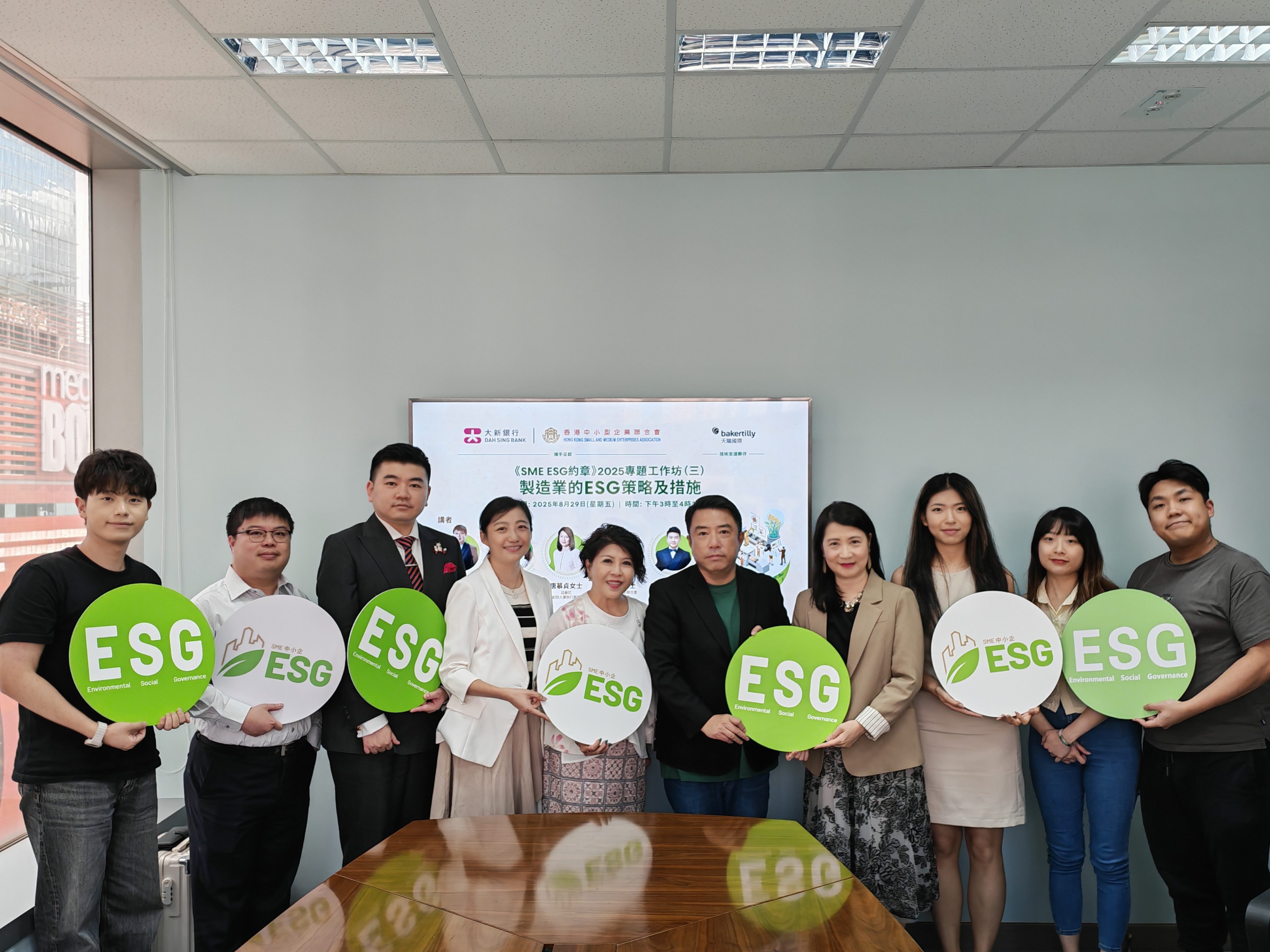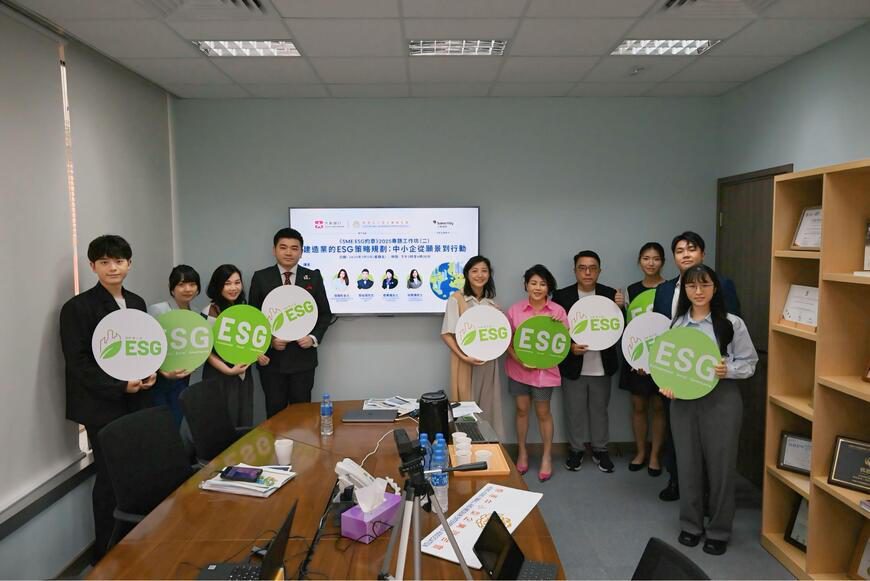
The Growing Significance of ESG
The global business landscape is shifting towards sustainability as companies increasingly recognising green transition, business ethics, and report transparency. Governments are tightening climate disclosure rules and implementing stricter environmental regulations. This newsletter will introduce “The Stock Exchange of Hong Kong Limited (hereafter the “Exchange” or “HKEX”) ESG Consultation Conclusion Updates” and “Product Eco-responsibility (Amendment) Bill 2023” in Hong Kong.
HKEX’s ESG Consultation Conclusion Updates
The Exchange recently released its Consultation Conclusions and Implementation Guidance on enhancing climate-related disclosures under Appendix C2 -– ESG Code (Part D) (the “New Climate Requirements”) on 19 April 2024. This milestone comes after a year-long consultation and demonstrates HKEX’s dedication to aligning with international sustainability standards. The New Climate Requirements are expected to be effective from the 2025 reporting year in phases, enabling Hong Kong Issuers to be at the forefront of adopting the International Sustainability Standards Board (ISSB) Climate Standards in Asia and fostering the harmonisation of sustainability disclosures worldwide.
New Climate Requirements Effective Date
A phased approach is adopted for the implementation of the New Climate Requirements as follows:
| New Climate Requirements Effective Date | ||
| Disclosure on scope 1 and scope 2 greenhouse gas emissions | Disclosure other than scope 1 and scope 2 greenhouse gas emissions | |
| LargeCap Issuers (Hang Seng Composite LargeCap Index constituents) | Mandatory disclosure
(Financial years commencing on or after 1 January 2025) | “Comply or explain”: in financial years commencing on or after 1 January 2025 Mandatory disclosure: in financial years commencing on or after 1 January 2026 |
| Main Board Issuers (other than LargeCap Issuers) | “Comply or explain” (Financial years commencing on or after 1 January 2025) | |
| GEM Issuers | Voluntary disclosure (Financial years commencing on or after 1 January 2025) | |
Summary Of The New Climate Requirements
The New Climate Requirements were underpinned and developed based on by The International Financial Reporting Standards Foundation S2 Climate-related Disclosures (IFRS S2), and the four core pillars were introduced by the Task Force on Climate-related Financial Disclosure (TCFD). Below is a summary of the noteworthy updates that deserve attention:
| Core Pillars | Final Rules |
| Governance | Disclosure of the organizational structure of the Issuer's governing body(s), highlighting the integration of climate-related risks and opportunities within the overarching business strategy Disclosure of the governance body(s) of the Issuer and their active role in overseeing and monitoring climate-related risks and opportunities, as well as management's involvement in governance processes, including their responsibility to control, manage, and exercise effective oversight over the governance body(s) |
| Strategy | Financial Effects Disclosure of climate-related risks and opportunities that could reasonably affect the Issuer's financial aspects in the short-, medium-, and long-term, including cash flows, access to capital, and the cost of capital Disclosure of both qualitative and quantitative information regarding the Issuer's current and anticipated financial implications and performance of the Issuer concerning on climate-related risks and opportunities Climate Resilience Disclosure of the Issuer's strategy and business model resilience by considering the outcomes of climate scenario analysis, identified climate-related risks and opportunities, and current developments and uncertainties. |
| Risk Management | Disclosure of the process and related policies used employed by the Issuer for identifying, monitoring, and prioritising climate-related risks Disclosure of the extent degree to which these risks are integrated into the Iissuer’s overall risk management process |
| Metrics and Targets | Internal Carbon Prices Disclosure of the price attributed to each metric tonne of greenhouse gas (“GHG”) emissions. This price is utilised to evaluate the costs associated with the Issuer's GHG emissions (or statement where not applicable) GHG Emissions – Scope 3 Other Indirect Emissions Disclosure of other indirect GHG emissions (not included in scope 2 GHG emissions) that occur in the value chain of an Issuer, including both upstream and downstream emissions. By understanding a company’s scope 3 GHG emissions, it becomes essential to assess the merits of its plan to transition to a lower carbon economy. |
In addition, the New Climate Requirements introduce various implementation reliefs to address concerns and readiness issues faced by Issuers regarding data availability while preparing climate-related disclosures for specific disclosure requirements.
The Issuer‘s Challenges Related To The New Climate Requirements :
| Core Pillars | Potential Challenges |
| Governance | Lack of competencies The Issuer's current governance structure may lack body(s) or individual(s) with appropriate skills and competencies to effectively oversee strategies designed to address climate-related risks and opportunities. The body(s) or individual(s) are expected to devote more time to managing the ESG matters In addition, the enhanced disclosures on governance to promote reporting transparency on various aspects might increase the time spent in preparing the ESG report of the Issuers, this effect is particularly noticeable in the first year of adoption |
| Strategy | Difficulties in the selection of climate scenarios for analysis The selection of sources of climate scenarios involves consideration of multiple factors by the Issuers, including but not limited to their industry sector, types of risks to be assessed, jurisdiction of operation and the time horizon determined. There is no “one size fits all” approach, thus when selecting the sources of scenarios, the Issuers should review multiple sources to understand the characteristics of each climate scenario such that the selected climate scenarios can align with their circumstances the most. |
| Risk Management | Difficulties in incorporating adopting climate scenario risk analysis for disclosure The Issuers may encounter challenges when it comes to incorporating climate scenario risk analysis into their disclosure practices, primarily due to its novelty. Issuers often lack familiarity with the essential elements involved, including qualitative narratives and quantitative modelling/simulation approaches. A notable deficiency in expertise among issuers hinders their ability to utilize suitable systems for disclosure in this domain effectively. |
| Metrics and Targets | Difficulties in identification of the categories and data collection of Scope 3 GHG emissions The Issuer may face difficulties in the identification and data collection of the 15 categories of Scope 3 GHG emissions, as well as a related lack of suppliers who may have limited understanding or expertise in measuring, managing and reporting greenhouse gas inventories and accounting practices. |
BTCGL’s Suggestions On What The Issuers Should Do:
Issuers should start preparing earlier and be ready for the challenges associated with climate-related scenario analysis, internal carbon pricing, and Scope 3 GHG emissions disclosures. The new climate-related disclosures require the Issuers to have directors and senior management with additional capabilities and skills to meet the new reporting requirement.
Product Eco-responsibility (Amendment) Bill 2023
The first phase of Product Eco-responsibility (Amendment) Bill 2023 is effective from 22 April 2024 with a six-month adoption transition period, while the timing of implementing the second-phase regulation will depend on the availability and affordability of the relevant non-plastic or reusable alternatives, and it is tentatively set for 2025.
Regulation of disposable plastic tableware
The Amendment Bill regulates the use of disposable plastic tableware in catering premises. It has a two-phase implementation plan.
| Types of disposable plastic tableware | Phase 1 | Phase 2 |
| EPS tableware, straws, stirrers, cutlery (forks, knives, spoons), plates | 1. Prohibits the sale to end-customers 2. Prohibits the provision at catering premises to customers for dine-in and takeaway services | |
| Cups | Prohibits the provision at catering premises to customers for dine-in services | 1. Prohibits the sale to end customers; 2. Prohibits the provision at catering premises to customers for dine-in and takeaway services. |
| Cup lids | ||
| Food Containers | ||
| Food container covers | ||
Other plastic products
The Amendment Bill regulates the manufacturing, selling, and distribution of disposable plastic products in phases. A table summarizing the details of different types of plastic products is available.
| Control Measures | Disposable plastic products | |
| Phase 1 | Phase 2 | |
| Ban sale and free distribution |
|
|
| Ban free distribution |
|
|
| Ban manufacturing |
| |
BTCGL’s Thought:
The companies may take time to adopt the policy change within these six-month adoption transition periods. We support the government's policy change as a crucial milestone in reducing plastic usage to a plastic-free culture, thus playing a vital role in safeguarding the earth and its precious resources in the long run.










